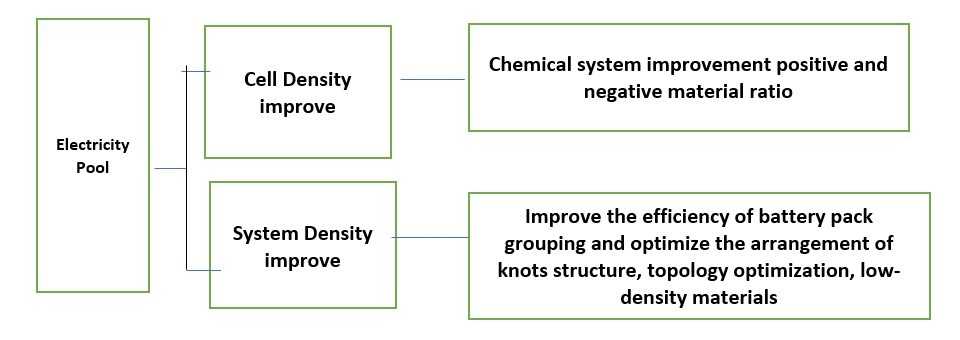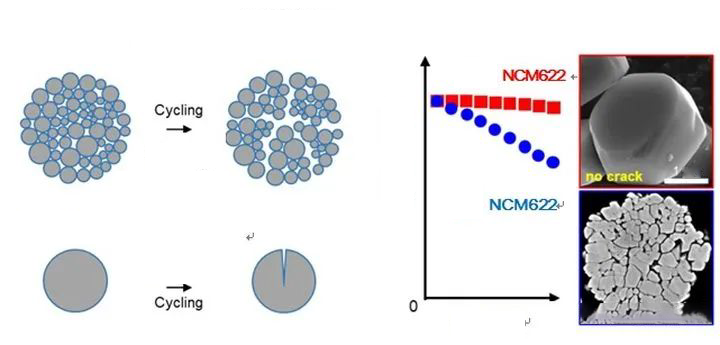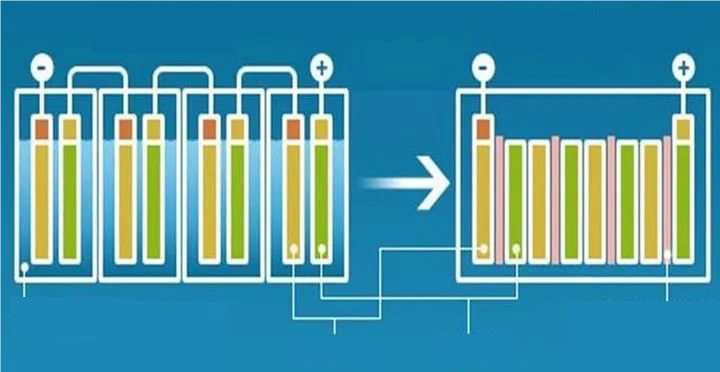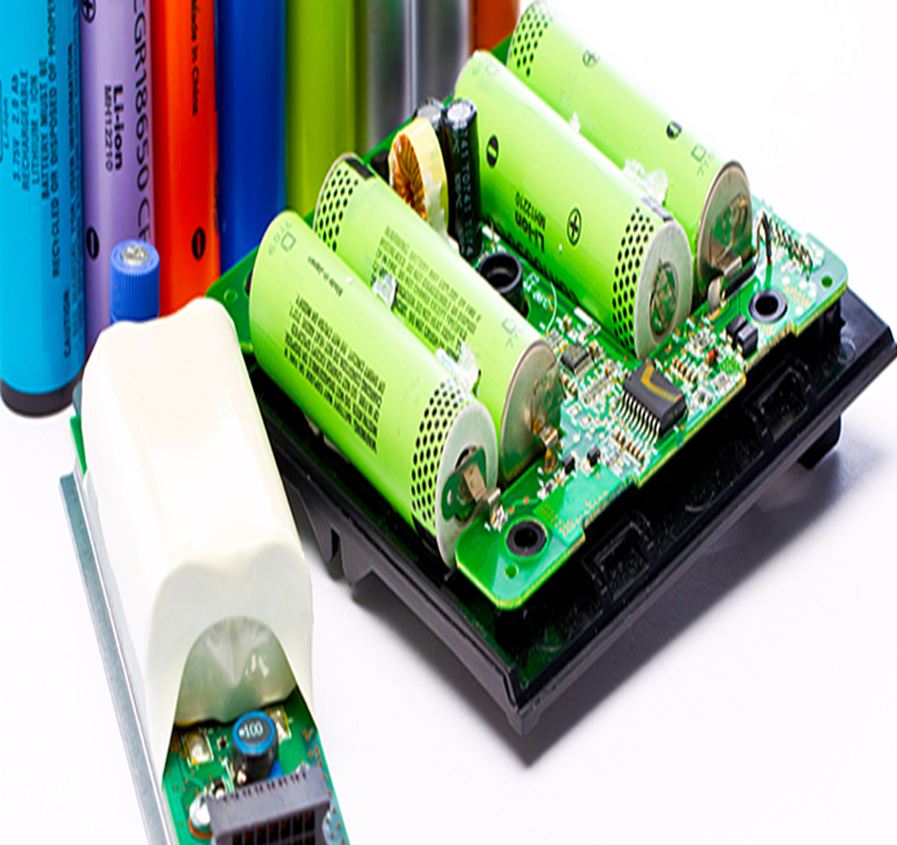Introduction
The development of electric vehicles is in full swing. As one of the most important parts, the power battery plays a decisive role in the battery life and safety of electric vehicles. Recently, we often hear some terms such as solid-state battery, honeycomb energy jelly battery, NIO car nickel 55 battery, Zhiji car silicon-doped lithium supplement, and CTP/CTC technology. In fact, the fundamental purpose of so many technical directions are to improve the energy density and safety of batteries. In this article, the we will take you to sort out the technical paths related to Latest Technology of Lithium Battery.
Pathways to Improve Energy Density and Safety
Think about a small question first: If a person goes on an expedition to the wild and his backpack is full of food, how can the food supply last longer? One of the easiest ways to think of is to pack the food with the highest calorie and density as possible, such as compressed biscuits, chocolate, etc. The other is to rationally distribute the layout of the bag and pack as much food as possible.

Engineers are racking their brains to increase the energy density of the battery pack, but also use two similar paths: increase the density of cells and increase the density of the system (battery pack). Increasing the density of the cell is equivalent to having higher calories in the food itself; increasing the density of the system is equivalent to having more food in the backpack. Of course, while improving energy density, safety is always the top priority. In order to improve the energy density and safety of batteries, what efforts have been made by the majority of engineers and what new technologies are currently emerging? Now we will discuss with the latest news.

How to make the Food Itself More Caloric? —— Increased Cell Energy Density
The battery cell consists of three parts, the positive electrode, the negative electrode, and the electrolyte between the positive and negative electrodes. To improve the energy density, we start from these three aspects. Let’s look at them one by one.
Positive Electrode – Nickel 55 Single Crystal Material
The 100kWh battery pack recently released by NIO, that is, the “smoke and no fire” battery previously announced by Ningde Times, has increased the energy density by 37% without changing the size of the battery pack and almost no weight gain. recharge mileage. The nickel 55 ternary cell used in the new battery is an important factor for the improvement of energy density. Its cathode material is a high-voltage single-crystal material. What is a single crystal? Before answering this question, let’s take a look at the technical direction of cathode materials.

In order to improve the energy density, the ratio of NCM is increased from “111(N:C:M=1:1:1)” to “523”, and then to “811”. This route has always been the mainstream direction of the development of ternary cathode materials.
Buy Now: Semco 12V Vehicles Battery Tester for any Type of Vehicle Battery
The other direction corresponds to the single crystal route (the key point is here). The newly released battery positive electrode uses a single crystal 5-series material. Single crystal materials are more suitable for high voltage. At present, most commercial ternary cathode materials are secondary spherical polycrystalline materials of about 10 microns formed by the agglomeration of nano-scale primary particles. For those who have no concept of polycrystalline and single crystal, you can refer to quartz sand and glass. Both are also silica. Quartz sand is a polycrystalline material, and glass can be considered a single crystal material.

There are a large number of grain boundaries in the polycrystalline NCM. During the charging and discharging process of the battery, due to the anisotropic lattice change, the polycrystalline NCM is prone to grain boundary cracking, resulting in the fragmentation of the secondary particles, the specific surface area and the interface. The response increases rapidly (Figure 3), resulting in a rise in cell impedance and a rapid drop in performance. However, there is no grain boundary inside the single crystal ternary material, which can effectively deal with the problem of grain boundary breakage and the resulting performance degradation [1]. Therefore, the single crystal structure can achieve higher voltage, not only that, but also improve the cycle stability of the ternary material and greatly improve the battery safety.

Negative Electrode – “Silicon-Doped Lithium” Technology:
Recently, it is reported that Zhiji Automobile is jointly developing the technology of “silicon-doped lithium battery” with CATL, and the two parties will share technical patents. Zhiji Auto said that the energy density of this battery is 30-40% higher than the current industry-leading level, and it can achieve a maximum battery life of about 1,000km and zero attenuation of 200,000 kilometres. Thermal insulation and flame retardant technology, as well as all-cast aluminium battery case packaging technology, combined with BMS terminal-cloud collaborative management to ensure battery safety.
What is the “Silicon-Doped Lithium Battery” Technology?
The graphite anode of traditional lithium-ion batteries has a low density. In order to pursue high density, new anode materials silicon carbon and silicon oxygen have become new hotspots for enterprises. However, silicon-oxygen will have the problem of low first-time efficiency and need to supplement lithium. During the first charge and discharge of the liquid lithium-ion battery, the electrode material reacts with the electrolyte at the solid-liquid interface to form a passivation layer covering the surface of the electrode material. This passivation layer is an interface layer with the characteristics of a solid electrolyte. It is an electronic insulator but an excellent conductor of Li+. Li+ can be embedded and extracted freely through the passivation layer, so this passivation film is called “” “Solid electrolyte interface” (solid electrolyte interface) is referred to as SEI film (the positive electrode is also formed with a layer of film, but at this stage it is believed that its impact on the battery is much smaller than the SEI film on the negative electrode surface [2]).
The lithium-replenishing process of silicon carbon negative electrode is to pre-coat a layer of lithium metal on the surface of silicon carbon negative electrode, which is in close contact with the negative electrode. Make up for the Li ions consumed due to the formation or repair of the SEI film during the first charge-discharge or cycle. Compared with the difficult and high-input negative electrode lithium supplementation process, the positive electrode lithium supplementation process is much simpler. The typical positive electrode lithium supplementation process is to add a small amount of high-capacity positive electrode material to it during the positive electrode homogenization process. During the charging process, excess Li elements are extracted from these lithium-rich cathode materials and intercalated into the anode to supplement the irreversible capacity of the first charge and discharge.
Through this complex lithium replenishment process, the density of the negative electrode material can be improved. It is not known what kind of technology Zhiji car is, but it is basically a foregone conclusion that Zhiji car will use this high-end lithium battery.
Finally, let’s take a look at the last link to improve the energy density of the cell – the electrolyte.
Buy Now: SEMCO provide high-quality Battery Balancer to measure the voltage, resistance, and more.
Electrolytes – Solid State Batteries & Jelly Batteries
On December 8, local time, Quantum Scape, a start-up company backed by Volkswagen and Bill Gates, announced the news of its latest solid-state battery, and said the battery will be put into production in 2024. Such solid-state batteries represent a significant improvement over traditional lithium-ion batteries: they can increase the range of electric vehicles by 80 percent. Let’s discuss what is a solid-state battery and what are its benefits.
While improving the energy density of the battery, the safety of the battery has to be considered. To fundamentally eliminate the safety hazard of lithium-ion batteries lies in the improvement of the safety of battery materials. But for cathode materials, these two aspects are contradictory. For example, as mentioned earlier, increasing the nickel content can increase the energy density, but increasing the nickel content means reducing the safety. Is there any way to enhance the safety of the battery from other aspects, so as to increase the energy density with confidence? At this time, it is necessary to consider from the perspective of electrolytes. A large number of studies have shown that the liquid electrolyte participates in most of the reactions in the thermal runaway process of the battery, and greatly reduces the initial reaction temperature of the battery, that is, the threshold for thermal runaway becomes lower. Therefore, improving electrolyte safety is one of the most effective ways to achieve battery safety [3]. The physical properties of the liquid electrolyte determine that it cannot always avoid leakage, and it is also not conducive to reducing the volume of the battery to improve the energy density. Therefore, in order to improve the energy density and safety, the solidification of the electrolyte has become a trend. We call batteries with solid electrodes and electrolytes solid-state batteries. The absence of liquid inside the solid-state battery cells is not only safer, but also can be assembled in series and parallel, which reduces the materials used for the packaging shell, and the PACK design is greatly simplified, which also improves the energy density of the batteries after grouping.


Similar to traditional lithium batteries, solid-state batteries consist of a positive electrode, a negative electrode, and an electrolyte. Its structure is simpler than traditional lithium batteries, and the solid electrolyte acts as the dual function of electrolyte and separator. There is no essential difference between the cathode material and the traditional lithium battery. The negative electrode material is a metal lithium negative electrode material, a carbon group negative electrode material and an oxide negative electrode material. For solid-state batteries, the research and development of solid-state electrolytes is the most important. There are many kinds of materials, including oxides, sulphides, polymers and composite solid electrolytes.
In addition to the large-scale use of liquid lithium batteries and solid-state batteries understudy, a semi-solid-state battery – jelly battery – has entered people’s field of vision. In December 2020, Honeycomb Energy took the lead in releasing jelly batteries and accepting reservations. The jelly battery is a lithium battery using a new type of jelly-like electrolyte. This gel-type electrolyte can better fit the surface of the electrode material, and has the characteristics of self-healing and flame retardant. At the same time prevent thermal diffusion. The jelly battery can be said to be a transition from the development of liquid batteries to solid-state batteries.
Buy Now: SEMCO Infratech – Fully Automatic Lithium Battery Equalizer A 24 Way
How to Install More? —— Increased System Density – New Battery Pack Technology
In addition to improving the energy density of the battery cells, it is also a way to increase the energy density of the battery to pack more cells into the battery pack of the same volume and weight. Here is a brief introduction to the relatively new battery pack technology.
Remove Internal Packaging – Cell to Pack (CTP) Technology:

Generally, the battery not only has a battery pack on the outermost part, but also has a “module” formed by a group of cells inside. The so-called CTP is no modularization, and the cells are directly packaged. Currently, it is a major choice for enterprises to improve energy density. CATL, BYD, and Honeycomb Energy have all introduced module-free battery pack technology. The popular BYD blade battery a while ago is based on lithium-ion phosphate batteries, and adopts a module-free design to improve space utilization.

Remove all inner and Outer Packaging – Cell to Chassis (CTC) Technology:
On Tesla’s battery day, a structural battery solution was proposed, which built the battery directly into the car structure (see Long Ge’s previous article “Tesla Battery Day Information Interpretation”). This structured battery technology is similar to the CTC technology previously proposed by the Ningde era. This technology integrates the battery cell and the chassis, and then integrates the motor, electronic control, and vehicle high-voltage system through an innovative architecture. Power Domain Controller optimizes power distribution and reduces energy consumption.
Conclusion
Through the above introduction, I believe that everyone has a certain understanding of battery-related new technologies. Although the commercial use of all-solid-state batteries still requires us to wait patiently, we believe that semi-solid-state batteries, positive single crystal materials and silicon-doped lithium supplementation technology will be experienced by us in the near future.
More Articles:
Dry Goods Lithium Button Battery Assembly and Test,
MSDS For LiFePO4 Battery Pack,
Power Battery Pack Technology,
Best Way of Charging Lithium Batteries,
Analyze Common Bulging Reasons for Lithium Batteries,
Aging of NCA Lithium Batteries,
Function and Components of Battery Pack & BMS,
Cell BMS Pack Failure Analysis,
Lithium Battery Protection Board,
Basic Knowledge of Lithium-ion Battery Commercialization,
Action protector in electric vehicle charging system,

